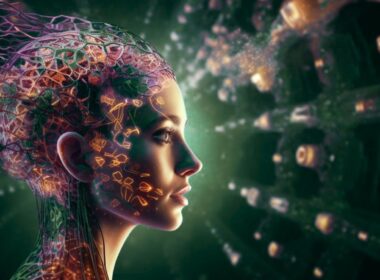Even the most passionate game devs hit a wall sometimes, right? You know the drill: endless asset creation, tweaking NPC scripts till 3 a.m., and that constant push to make each release more immersive than the last. It’s a grind. Players keep asking for smarter worlds, richer stories, more personal experience, and somehow, every update has to top the one before. It’s exciting, but it can also feel like chasing a moving target.
That’s where AI in video game development is quietly changing the rules. According to Unity Technologies’ CEO, generative AI tools are expected to boost game development productivity by 5 to 10 times, not by replacing human creativity, but by freeing it. Imagine turning weeks of manual world-building into hours of intelligent collaboration between you and an AI that understands your creative intent.
This blog explores exactly that transformation: how AI is changing design, storytelling, and the very way games come to life. If you’ve ever wondered what the next level of game creation looks like, you’re in the right place.
Key Takeaways:
- AI-Driven Evolution: Game development is moving from manual, scripted design to intelligent, data-driven creation. AI now powers adaptive NPCs, generative worlds, and faster, more efficient production cycles.
- Core Technologies: Deep learning, reinforcement learning, procedural generation, predictive analytics, and engine-level integrations are at the heart of modern AI systems. These tools enable smarter gameplay, automation, and precision testing.
- Real-World Impact: Studios use AI for dynamic world-building, automated QA, and personalized player experiences. The result is shorter development timelines, lower costs, and higher engagement.
- Emerging Frontiers: Generative AI and XR are redefining immersion. They enable AI-assisted prototyping, lifelike rendering, responsive audio, and player co-creation within adaptive, mixed-reality environments.
- Strategic Advantage: The future belongs to teams that combine human creativity with AI intelligence and strong governance. Codewave champions this approach through its AI, ML, and XR expertise, building scalable and human-centered experiences.
What Is AI in Video Game Development?
For years, “AI in gaming” meant preset paths and predictable NPCs; systems that followed instructions rather than learned from players. But that definition has evolved. Today, AI in video game development means embedding intelligence across the entire creation process, from design and development to testing and player engagement.
Modern game studios are now using machine learning, generative models, and reinforcement learning to build smarter, more adaptive experiences. These systems can analyze player behavior, generate entire worlds on the fly, or even assist developers in designing and testing features with greater precision.
Here’s what that looks like in action:
- Adaptive gameplay: NPCs that evolve and react based on how players interact.
- Procedural creation: Game levels and environments are generated intelligently in real time.
- Development acceleration: AI-assisted tools that reduce manual design and testing cycles.
- Smarter analytics: Systems that study player data to personalize content and improve retention.
Understanding what AI in video game development really means sets the stage for a deeper look at the systems that make it work.
5 Key Technologies Powering AI in Game Development
AI in video game development is built on a few key pillars, each enabling games to learn, adapt, and generate content in ways traditional methods never could.
These tools help studios move from scripted design to intelligent, data-driven creation:
- Deep Learning & Neural Networks: Power pattern recognition, player behavior analysis, and generative asset creation, helping systems learn and evolve.
- Reinforcement Learning: Trains game agents through trial and feedback, creating NPCs and testing bots that adapt like human players.
- Procedural & Generative Models: Automate world-building, art, and storylines at scale, reducing manual workload and increasing creativity.
- Predictive Analytics & Adaptive Systems: Use data to adjust difficulty, forecast churn, and personalize gameplay in real time.
- Engine & Middleware Integration: Built-in AI frameworks in engines like Unreal and Unity make AI development accessible and scalable across teams.
These technologies now form the base for how AI is applied across game development, shaping smarter systems and faster creation.
Applications of AI in Video Game Development
From shortening production cycles to predicting player behavior and balancing worlds in real time, AI’s impact is specific, measurable, and already in motion. Understanding these applications reveals how studios are using AI not just to build faster, but to build smarter.
1. Smarter NPCs and Adaptive Gameplay
Once limited to pre-set rules and predictable reactions, non-player characters (NPCs) are now evolving into responsive, dynamic entities powered by reinforcement learning.
Instead of relying on static scripts, modern AI allows NPCs to analyze player choices and adapt strategies on the fly, creating unique, human-like reactions every time.
Why it matters:
- It makes worlds feel alive where players aren’t just reacting to the game; the game reacts to them.
- Reinforcement learning (the same tech used in robotics and autonomous systems) enables NPCs to learn behavior patterns in a matter of days, not months.
- It enhances replayability and emotional connection, both of which are important for retention and storytelling.
2. Procedural Content Generation (PCG) and World Building
Creating expansive game worlds has always been a resource-heavy process. AI-driven procedural generation now automates much of that workload by creating maps, environments, and even quest structures that feel organic and varied.
What this enables:
- Developers define creative rules, and AI fills in details like terrain, architecture, and pathways.
- Worlds become more dynamic, allowing each playthrough to feel different.
- Teams can move from concept to prototype much faster without sacrificing creative control.
This approach lets designers focus on storytelling and visual polish rather than manual repetition.
3. AI-Powered Development and Testing Pipelines
Behind every game release lie months of debugging and optimization. AI is changing that by streamlining the testing and production process.
Why studios benefit:
- Machine learning models identify bugs or performance issues through automated code analysis.
- Tools can optimize frame rates, textures, and animations without manual intervention.
- Integrating AI into testing pipelines helps reduce release delays and production fatigue.
For larger teams, this leads to shorter development cycles and more stable launches.
4. Player Analytics and Experience Personalization
AI extends beyond development to influence how players experience the game itself. It collects and interprets gameplay data to create personalized experiences that adapt to each user.
What this achieves:
- Difficulty levels, missions, and challenges adjust in real time based on player performance.
- Predictive models help identify potential churn and improve retention strategies.
- Data-driven insights inform updates and expansion planning.
Personalization has become essential to modern gaming, and AI provides the intelligence that makes it possible at scale.
5. Generative AI and Next-Gen Game Engines
According to arXiv, researchers are exploring generative game engines that can synthesize worlds, textures, and mechanics with limited human input. These systems use natural language and generative models to build interactive environments in real time.
Why this is significant:
- Developers can use text or visual prompts to create working prototypes almost instantly.
- Generative AI speeds up ideation, reduces design bottlenecks, and allows more experimentation.
- It opens the door for smaller studios to compete with AAA-level creativity and scale.
As generative systems redefine how ideas take shape, the real opportunity lies in applying that intelligence beyond concept; turning imagination into design, and design into experience. See how Codewave’s Generative AI solutions make that possible.
This represents the next big leap in how games will be conceptualized and produced.
6. AI in Graphics, Audio, and Immersive Worlds
AI also enhances the sensory dimension of gaming. It improves how games look, sound, and feel, particularly in immersive environments like VR and XR.
Key impacts
- AI-assisted rendering delivers higher visual fidelity without additional hardware strain.
- Audio generated or modified by AI reacts to environmental cues, adding realism.
- Dynamic lighting and physics simulations create more natural, lifelike environments.
This level of adaptability ensures that each moment in a game feels uniquely responsive.
Also Read: AI/VR Development: How AI is Transforming Virtual Gaming
As AI becomes part of everyday game creation, studios are turning to it to work smarter, move faster, and deliver experiences players haven’t seen before.
Why Game Studios Are Embracing AI
According to a recent survey, around 87 % of game developers already use AI agents in their workflows, mainly to automate repetitive tasks and enhance efficiency.
Studios are adopting AI because game development today faces unprecedented pressures: escalating content demands, rising costs, shrinking time-to-market, and fierce competition. AI offers a practical pathway to meet these challenges.
Key Drivers:
- Efficiency – faster asset creation, shorter development cycles:
AI enables studios to automate tasks like asset generation, localization, and quality assurance. For example, some developers report up to 50% reduction in testing time using AI tools. - Cost reduction & scalability
With AI, studios reduce reliance on manual labor for large volumes of content and repetitive workflows. Generative tools help smaller teams compete with larger ones. - Enhanced player experience: immersion, replayability, dynamic worlds:
AI-driven systems create adaptive gameplay, richer NPC behaviour, and dynamic content; elements that boost engagement and retention. - Staying competitive & innovative in a crowded market:
As the developer ecosystem becomes more saturated, studios using AI gain speed and creativity advantages, letting them launch more often and experiment more boldly.
Studios putting AI into practice are already proving its impact, turning innovation into real gaming experiences.
Real-World Examples of AI in Games
The clearest proof of AI’s value in gaming comes from how it’s already being used. Studios are applying it to generate expansive worlds, speed up creative workflows, and train intelligent in-game agents that learn and adapt.
These examples reveal how AI is moving from experimentation to everyday production, changing both how games are made and how players experience them.
- No Man’s Sky
Hello Games used procedural generation to create an effectively infinite universe of planets, flora, fauna, and biomes, allowing small teams to ship massive worlds that would be impossible to handcraft.
The studio’s ongoing updates demonstrate how generative pipelines enable continuous content expansion with limited headcount.
What to note for studios:
- Procedural pipelines let teams scale content volume without linear increases in staff.
- Rule sets plus generative systems preserve designer intent while automating detail generation.
- Ubisoft Ghostwriter
Ubisoft’s research tool Ghostwriter generates first drafts of short NPC lines and barks to reduce writer workload. The tool is positioned as an assistant that speeds drafting while leaving creative control and final editing to human writers.
What to note for studios:
- AI can handle repetitive, low-value writing tasks and free writers for higher-impact story design.
- Human review remains essential for tone, lore consistency, and safety.
- DeepMind AlphaStar
DeepMind’s AlphaStarachieved Grandmaster level in StarCraft II using reinforcement learning and self-play, demonstrating that RL agents can master complex, imperfect-information strategy games. AlphaStar serves as a benchmark for training high-skill agents and automated playtesting.
What to note for studios:
- RL enables agents that discover strategies and exploits, useful for both NPC behavior and automated QA.
- Training such agents requires a simulation scale and careful constraints to match human play.
The progress seen so far is only the beginning, hinting at how much further AI can take game development in the years ahead.
The Future of AI in Video Game Development
Recent studies highlight a sharp rise in generative systems, adaptive environments, and immersive platforms powered by AI. For instance, over 20% of games released in 2025 on Steam report using generative-AI assets, up nearly 700% year-on-year. These indicators suggest that what’s “experiment” today may be standard practice tomorrow.
For decision-makers and product leaders tasked with guiding innovation, emerging trends matter because they hint at where investment, talent, and competitive advantage will lie in the next 3–5 years.
Here are a few:
- Generative Game Engines: Research into “Interactive Generative Video” proposes frameworks for game engines that autonomously create content, environments, and gameplay logic.
- Autonomous Game Design: Generative AI is increasingly applied to prototype entire mini-games or storylines from a prompt and script, reducing time to concept.
- Player-Created AI Content: With tools that allow players to generate characters, levels, or environments, studios are shifting from providing content to enabling co-creation. Research into pipelines for asset generation supports this shift.
- Ethical AI Governance: As AI becomes more embedded in development and live ops, concerns around fairness, bias, ownership, transparency, and inclusivity are rising. These are key for studios operating globally.
- AI in VR/XR: Studies show large language models (LLMs) and procedural systems being applied in VR environments to enhance narrative, NPC behaviour, and immersion.
As AI continues to expand what’s possible in virtual and mixed realities, Codewave’s XR team is helping organizations design experiences that feel more human, immersive, and intelligent. Explore our XR capabilities!
Suggested Read: The Best 2025 Technology Trends to Stay Ahead in the US Market
As AI continues to reshape game development, the real advantage will belong to teams that blend technical capability with purposeful design; a space where Codewave stands out.
Codewave: Redefining Innovation Through Design Thinking and AI
For studios, enterprises, and technology leaders looking to elevate how ideas are imagined, built, and scaled, Codewave offers more than development; it offers transformation.
With over 400 successful projects delivered across industries, our strength lies in building the intelligence, design systems, and immersive infrastructure that shape next-generation experiences.
Ranked among the top 10% of digital innovation firms globally, Codewave’s human-centered design and AI-driven approach empower teams to innovate faster, scale smarter, and create experiences that truly connect.
Codewave helps teams bring intelligence and immersion to life through AI, ML, and XR-driven solutions:
- Generative AI tools: developing custom models that automate creativity, streamline workflows, and enhance decision-making.
- Conversational AI: designing smart chatbots and voice assistants that evolve with every user interaction.
- Computer vision: enabling real-time image and video analysis for recognition, tracking, and automation.
- Predictive analytics: building models that anticipate trends, behaviours, and outcomes to drive strategic growth.
- Immersive XR experiences: crafting AR, VR, and MR environments for training, collaboration, and customer engagement.
- Human-centred design: merging design thinking with emerging tech to create intuitive, user-focused solutions.
- Scalable infrastructure: engineering systems that stay secure, adaptive, and ready for future expansion.
- End-to-end development: from ideation and prototyping to full-scale implementation and optimization.
Suggested Read: How Can We Make an App? A Step-by-Step Guide
As studios adopt AI, partnering with companies like Codewave, understanding the challenges and how to overcome them becomes key.
Challenges and Best Practices
Studios are learning that successful integration depends as much on governance and process as it does on algorithms. The table below highlights the most common challenges teams face and the practices that help turn them into long-term strengths.
| Challenge | Best Practice |
|---|---|
| Data quality and availability | Build verified data pipelines and use synthetic data generation to ensure consistency and accuracy. |
| Integration with existing tools | Introduce AI through modular pilots or middleware before full-scale rollout. |
| Legal and IP risks | Maintain transparency on data sources and ensure all AI-generated assets are human-reviewed. |
| Bias and fairness | Implement regular audits and human oversight in personalization systems. |
| Tool reliability and governance | Track model versions and maintain documentation for every AI system in use. |
| Compute and cost management | Use cloud-edge hybrid setups to balance cost and performance. |
| Skills gap | Upskill current teams and build cross-functional AI; design collaboration units. |
| Testing and validation | Combine automated QA with human testing to evaluate AI-driven behaviors. |
| Player trust and transparency | Clearly disclose AI features and collect player feedback for continuous improvement. |
| Regulatory uncertainty | Stay aligned with evolving local and global AI standards through regular compliance reviews. |
Conclusion
The future of AI in video game development will belong to studios that see it as more than automation; as a way to design meaningfully, build efficiently, and scale intelligently.
Success won’t come from adopting every new tool, but from integrating the right intelligence into the creative flow without losing the human touch that makes games unforgettable.
That’s where Codewave stands apart. By combining design thinking with deep technical expertise, Codewave helps studios turn complex AI capabilities into practical, player-focused outcomes; from smarter systems and adaptive experiences to seamless production pipelines.
If your team is ready to explore what’s next in AI-driven creation, schedule a free consultation with Codewave today and discover how purposeful design and intelligent engineering can redefine your next game.
FAQs
1. How is AI in video game development different from traditional game programming?
Traditional programming follows fixed rules and scripts, while AI systems can learn, adapt, and respond dynamically. This allows developers to create evolving worlds, smarter NPCs, and experiences that adjust to player actions in real time.
2. Can small or mid-sized studios realistically adopt AI in their workflows?
Yes. With modular AI tools, cloud-based platforms, and generative design systems, smaller studios can start small by using AI for testing, asset generation, or player analytics without heavy infrastructure investment.
3. What are the biggest risks of using AI in game development?
Key risks include data quality issues, IP and copyright concerns, ethical use, and the challenge of maintaining creative control while automating processes. Strong governance and skilled oversight can mitigate these challenges.
4. How does AI improve the player experience?
AI enhances immersion through adaptive gameplay, realistic NPCs, personalized challenges, and dynamic environments. It helps each player experience a world that feels unique and responsive.
7. Is AI replacing human creativity in game design?
No. AI enhances creativity by handling mechanical and repetitive tasks. Human designers still lead storytelling, emotional design, and vision. The best games use AI as a collaborator, not a replacement.
Codewave is a UX first design thinking & digital transformation services company, designing & engineering innovative mobile apps, cloud, & edge solutions.







